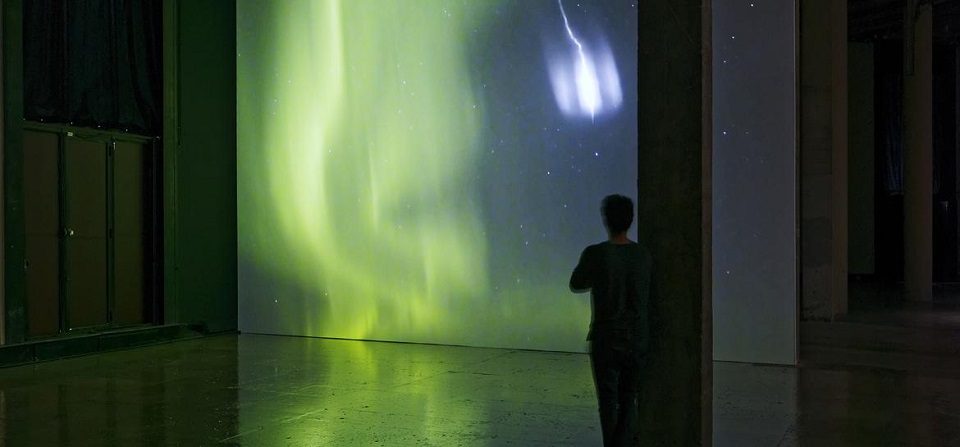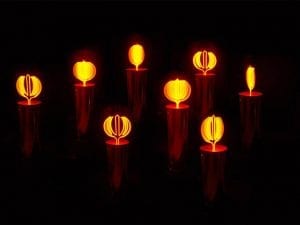The moment you enter the Palais de Tokyo you’re already in a parallel universe. Even the sign on the museum shop is an anamorphically-designed version of the usual yellow French press logo you find in the street. A floor down into the museum, the viewer is invited to experience a video installation by Clément Cogitore (b. 1983) which takes you further down the rabbit hole. The fact of being able to lie down on a person-sized pouf in front of a giant screen prepares you to let go of your everyday life.
Based on reports about sounds that are purportedly emitted by the aurora borealis, Cogitore’s English-language film spins an uncanny narrative that takes the spectator from 1882 to the present. The 19th century account involves the witnessing of the aurora by an American adventurer recounting the effect it has on an Indian tribe. In Saami and Inuit communities the sonic phenomenon was interpreted as the dead attempting to talk to the living.
The documentary informs us that the sounds that have been heard are scientifically impossible to perceive, but it strains to make them palpable to the viewer. This building up of mystery is in keeping with Cogitore’s filmography which concentrates on exploring the enigmatic. The film generates this through otherworldly vibrating sound effects mixed in with an undercurrent of techno and out-of-focus, grainy imagery. The narration is driven by a number of off-screen narrators and on-screen writing, with snippets from Hamlet and other texts interspersed. It combines existential questioning with a disquieting atmosphere in the lineage of Jean-Luc Goddard’s later films and Andreï Tarkovsky’s Solaris. It’s a hypnotic experience and succeeds in blurring the boundary between the living and the dead.
Clément Cogitore : L’intervalle de résonance runs until 11 September, Palais de Tokyo, Paris.
Find out more: www.palaisdetokyo.com
Erik Martiny
Credits:
1. Installation view of Clément Cogitore : L’intervalle de résonance. Courtesy of Palais de Tokyo.





